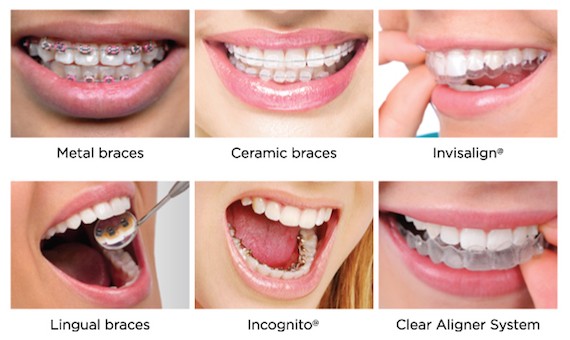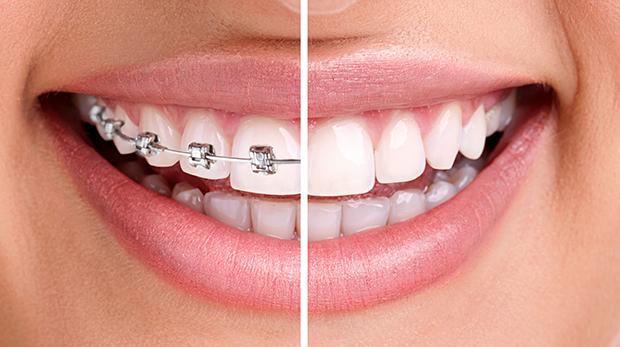- Dental Implant Pain Causes and Best Treatments - September 15, 2020
- Clinic Brings Brighter Smiles to Local Faces - April 30, 2019
- Top 10 Wisdom Tooth Removal Clinics in Your City - March 28, 2019
Only a small number of individuals are fortunate to have a good set of teeth at birth. However, orthodontic intervention (rearrangement of an uneven set of teeth) can bring a vast change to anyone who needs a better teeth array. It is common for a dentist to advice the dental braces which are used to restore and correct a patient’s facial appearance around the mouth.
Generally, teeth braces are procedures used in orthodontics to support and keep the teeth on the same level with each other – to ease a person’s ability to bite – in addition to improving their dental wellbeing.
Who Needs Braces?
Braces and orthodontic management are aimed at realigning a set of teeth to enable it to bite properly. Orthodontic treatment is a corrective measure, usually necessary when the teeth are crowded and when a patient cannot bite properly as a result of teeth misalignment. It could also be a case of a “cross jaw disorder or syndrome” – the upper and lower teeth being unable to be on the same level.
Why are they Important?
Teeth braces are very useful, for the following reasons:
- Braces do not only promote good oral health but restores a bad set of teeth back to normalcy. It saves some affected individuals the shame of not being able to open their mouths because of a malformed set of teeth.
- Braces are used to put right all disorders outlined above.
- Braces will enhance your ability to bite better, as your set of teeth is restored to the same level.
Types of Teeth Braces

It is estimated that over 4 million people use braces in the United States of America alone, most of them being adults. Here is a detailed description of various types of braces:
Metal Braces
Metal braces are the kind of braces most people remember, once they are mentioned. But, new and more recent braces are tinnier and hardly noticeable, when compared to the old-fashioned types known to many, because of the many inconveniences they cause to those who use them. Putting on these kinds of braces also relieves you of all fears of losing them.
Stainless Gold-plated braces
This kind of braces shows the class status and tastes of the users, (a status symbol) when compared to those that are usually linked with many inconveniences. However, wearing gold-plated braces don’t really make any difference, since they do the same work others do.
Ceramic Braces
These are usual substitutes to the old-style metal braces. Orthodontists use them to aid the realignment and making a set of teeth to straighten out. Ceramic braces resemble the old-fashioned types in the way they are designed, though their materials differ – their cords are clear and hardly visible.
Lingual Braces
This kind of brace is positioned behind the teeth – in front of the tongue. Since it is not in the front of the teeth, it helps to straighten the teeth better without being seen. Fixing this type of braces takes time because they are glued to the tongue which helps to slowly support the strengthening of the teeth.
Self-Ligating Braces
Though not as well-known as the others, self-ligating braces have existed for a long time, but only began to be more accepted in the 1980s. It is a simple change made on the braces which cause little inconveniences when you visit your orthodontist from time to time.
Invisalign
These are transparent comfortable braces (made of harmless flat plastic materials), hardly discernible and can easily be removed. It is worm over your teeth to straighten it and eases your ability to bite with it. It allows you to care for your teeth in the normal way during your visits to the hospital, and living your usual way. Your orthodontist makes the braces that would suit your purpose after three-dimensional x-ray images are made of your teeth – ensuring you get what makes you as comfortable as possible.
Damon Braces
These earlier model flexible braces could be uncomfortable when being put in place, and easily collects unsightly plaque. However, they work like the traditional self-ligating braces and are fixed in the same way as others. Damon braces seem to give more ease of use, as you can just slip them into places, allowing the teeth to move normally as they become level with one another. The sliding technique, it is made of, gives it this great advantage.
The Procedure
It’s been reported that teeth braces have been in use as far back as 1000 B.C. (American Association of Orthodontists.)
Here are recent techniques to put braces in place for patients:
First Step
The first step is to consult your orthodontist to determine if you need braces which would depend on your age. For younger individuals, another visit will be necessary. Usually, your first visit includes discussion and appraisal of the under-listed issues:
- Determination of the necessity for braces or otherwise
- The type of braces required for the treatment
- Length of treatment
Second Step
- Cleaning of the teeth to ensure that the braces are put over clean teeth
- Get the teeth dried to prepare it for the application of the fixing material
- Application of the fixing material; wait for some seconds and then rinse
- Application of a lotion on the tooth where braces would be fixed to prepare it for ease of installation
Third Step
- Dental spacers are inserted in the mouth to enable your dentist view the mouth clearly
- To ensure there are no overcrowded teeth that would need extraction before braces are put in place
- Applying a particular braces-installation glue between the tooth and braces
- Assigning braces to a particular tooth, after removing excess glue
- Permanent fixing of braces to each assigned tooth
- Using a special high-intensity mild light to harden the installation glue.
Final Step
- Removal of braces from teeth surfaces after they have been realigned.
- Fixing of orthodontic retainers to firmly hold teeth into their new desired place, having recovered their desired form.
Advantages of Braces
- Prevention of holes and cracks on tooth
- Correction of jaw disorders
- Pain reduction
- Braces aid digestion
- Eradication of unsafe lifestyles
- Prevention of cross jaw
- Enhancement of facial look
- Prevention of tooth decay
- Stops gum infections
- Prevention of teeth wound
- Improvement of facial expression
- Prevention of bone loss
- Confidence enhancement
- Builds self-worth
- Braces optimize your mouth size
- Better night sleep and breathing
- Better biting activity
- Speech improvement
Side Effects
It is important to consult and discuss with your orthodontist to ensure that braces are good for you, because of its drawbacks stated below:
Cleanliness
Plaque and germs easily accumulate around braces and teeth from food particles, requiring constant and meticulous cleaning, to avoid gum damage.
Soreness
Braces cause injuries to the gum during adjustments by your orthodontist, causing soreness.
Jaw pain
When braces are adjusted to tighten it, the injury could occur around the jaw, producing pain.
Adjustments Pains
Tightening and retightening of braces to realign the teeth cause general discomfort and pain every time it’s done monthly by the orthodontist. This results from the pressure the process involves.
Cost

- United States 3000 USD – 8000 USD
- Canada 5000 USD – 9000 USD
- Mexico 700 USD – 3000 USD
- Australia/New Zealand 6000 USD – 9000 USD
- India 200 USD – 800 USD
- Singapore 3500 USD – 6000 USD
- Indonesia 100 USD – 500 USD
- Malaysia 2000 USD – 5000 USD
- Dubai 3000 USD – 9000 USD
- Pakistan 200 USD – 700 USD
- Germany 3000 USD – 9000 USD
- England 2000 USD – 7000 USD
- Ireland 500 USD – 4000 USD
- Scotland 3000 USD – 9000 USD
- Europe 3000 USD – 9000 USD
- Africa 1000 USD – 4500 USD
- South America 2000 USD – 6000 USD
Can Adults Wear Braces?
One’s smile easily attracts people first and could have a far-reaching positive effect on them. However, if you fear to smile or try to hide your teeth while attempting a smile, you won’t attract a positive response from people. There are grown-ups who did not obtain orthodontic intervention as infants to restore misaligned teeth, which causes improper biting and various jaw disorders.
A dental problem can occur at any age because of an accident, ill health, or just by the normal developmental process. Having a well-aligned tooth as a young person does not guarantee that you will carry a good set of teeth into adulthood.
Can You Straighten Teeth Without Braces?
Fixing braces is not the only way to maintain an even set of teeth. Use of dental floss – tying the teeth together and using the hand to realign them. It is an easy way to apply pressure on teeth to push them back but one must have to follow it religiously to get the best results.
Time interval also matters in this regard. This is a home-grown treatment method which calls for great caution to avoid unpleasant long-lasting harms to the gum and teeth, as too much-repeated pressure could bring unexpected problems.
Are you looking for alternative treatment options? Find out more information at Nearby Dental homepage.



